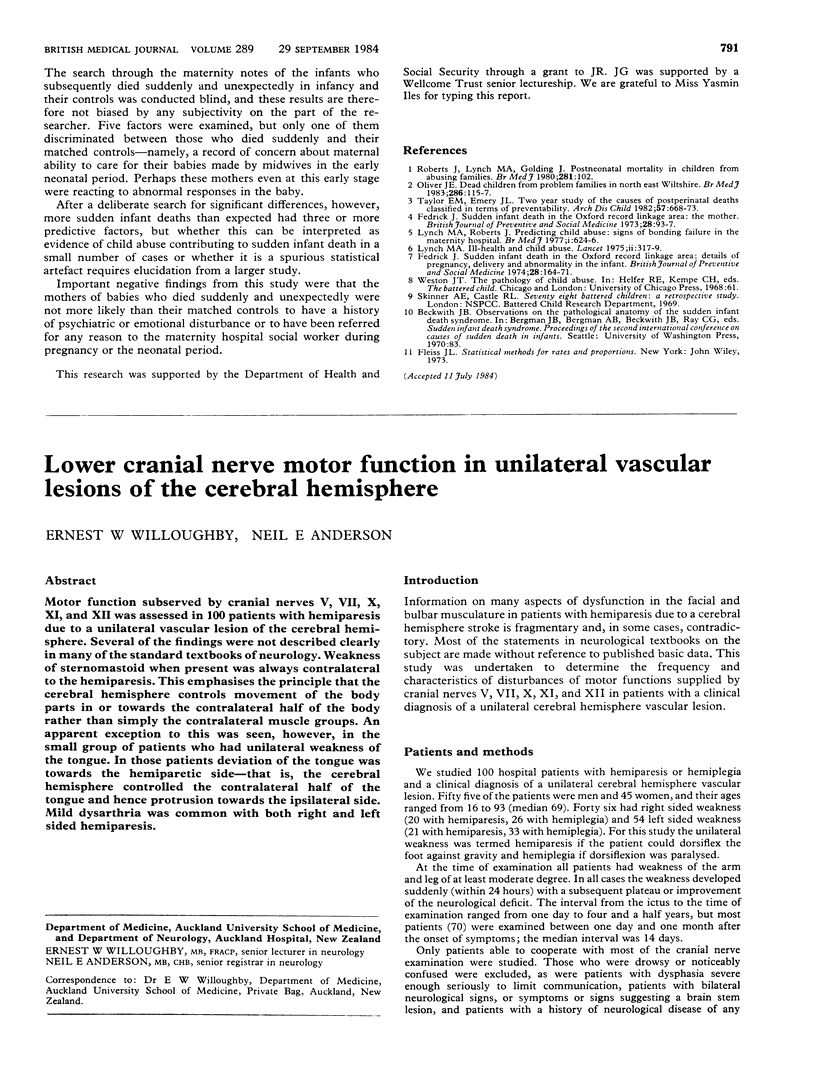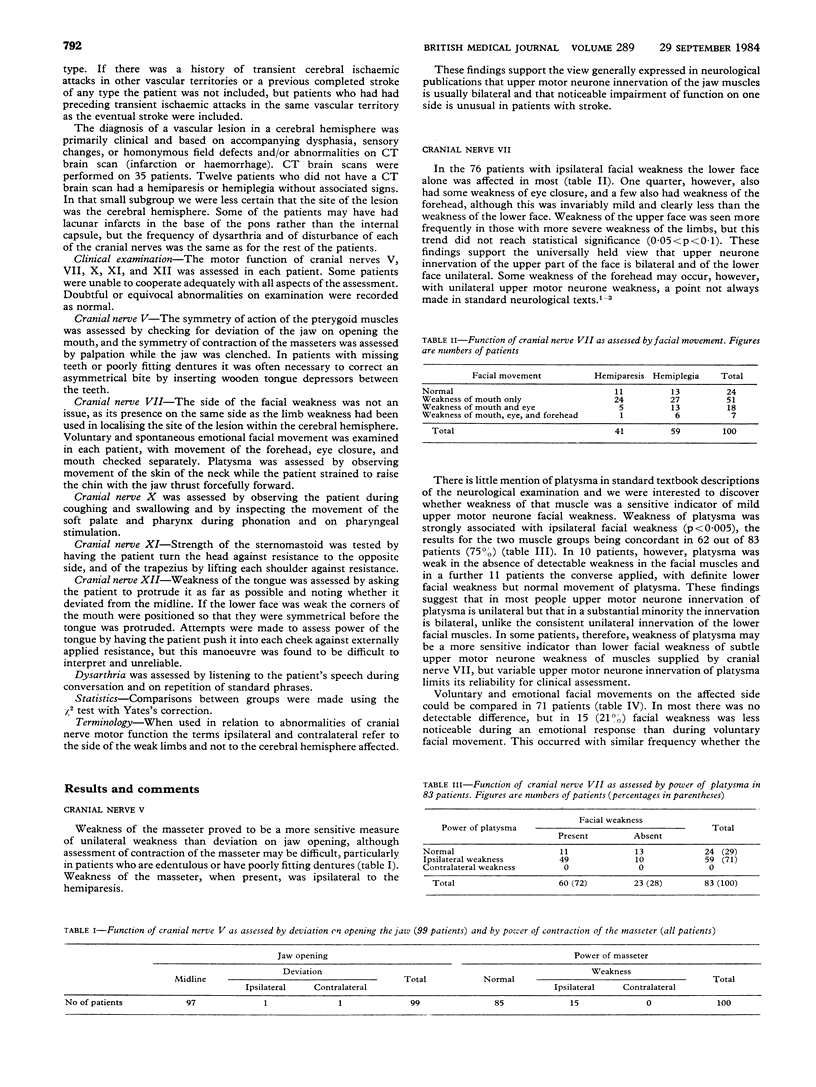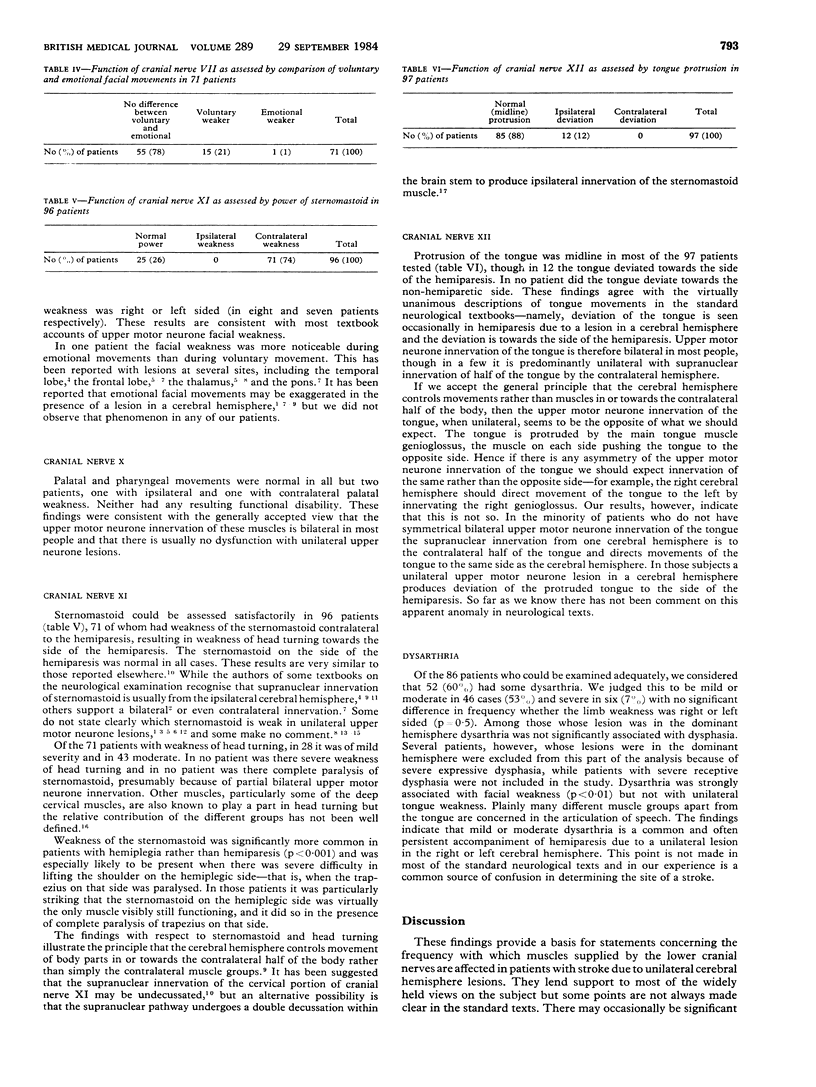Abstract
Motor function subserved by cranial nerves V, VII, X, XI, and XII was assessed in 100 patients with hemiparesis due to a unilateral vascular lesion of the cerebral hemisphere. Several of the findings were not described clearly in many of the standard textbooks of neurology. Weakness of sternomastoid when present was always contralateral to the hemiparesis. This emphasises the principle that the cerebral hemisphere controls movement of the body parts in or towards the contralateral half of the body rather than simply the contralateral muscle groups. An apparent exception to this was seen, however, in the small group of patients who had unilateral weakness of the tongue. In those patients deviation of the tongue was towards the hemiparetic side--that is, the cerebral hemisphere controlled the contralateral half of the tongue and hence protrusion towards the ipsilateral side. Mild dysarthria was common with both right and left sided hemiparesis.
Full text
PDF



Selected References
These references are in PubMed. This may not be the complete list of references from this article.
- Balagura S., Katz R. G. Undecussated innervation to the sternocleidomastoid muscle: a reinstatement. Ann Neurol. 1980 Jan;7(1):84–85. doi: 10.1002/ana.410070116. [DOI] [PubMed] [Google Scholar]
- Geschwind N. Nature of the decussated innervation of the sternocleidomastoid muscle. Ann Neurol. 1981 Nov;10(5):495–495. doi: 10.1002/ana.410100519. [DOI] [PubMed] [Google Scholar]


